Where To Visit İn Cappadocia
The Importance of Cappadocia
The region, which includes Nevşehir, Kırsehir, Nigde, Aksaray, and Kayseri and which is generally called Cappadocia, was created by Erciyes Mountain, Güllü Mountain, and Hasan Mountain about 60 million years ago. It is a highly specialized region shaped by erosion by its waters. Although the basis of this note forms, lives here in the fairy chimneys carved by human hands constitute the main magical side of Cappadocia.
The traces of human life in this region date back to the Paleolithic period. The region where the Hittites once lived later becomes one of the important centers of Christianity. The underground cities, fairy chimneys, and caves in the region allow Christians in the region to live in secrecy during the Roman Empire period when Christianity was prohibited. It is carved into rocks in the region and is found in many places in cities, including underground cities. If what you learned in geography lessons got dusty, you can read our article, The Formation of Fairy Chimneys.
History of Cappadocia
Since Cappadocia is one of the cities on the route of the historical Silk Road, it has become one of the places that developed with trade during the Hittite period. B.C. By the 12th century, the Hittite Empire was collapsing. In the 6th century BC, the Persian Empire gives Cappadocia its present name, which means the Land of Beautiful Horses. B.C. When Alexander the Great defeated the Persian Empire in 332 BC, the Kingdom of Cappadocia was established, but M.S. In the 17th, Cappadocia becomes a part of the Roman Empire.
In the 3rd century, Cappadocia became a place where Christians escaping from Roman pressure settled due to the natural conditions in the region suitable for hiding and living secret lives. Thus, this region gets its share of Icon Hostility to a minimum. Also in this period, Arab raids are taking place in the region. In the 11th and 12th centuries, the influence of the Seljuks can be seen. In the Ottoman Period, the waters calm down and the region finally regains peace. The last Christians staying in Cappadocia immigrated from the region after the Treaty of Lausanne.
Where to visit in Cappadocia
Cappadocia is indeed a place where natural beauties are blended with a miraculous view. The interesting structure of the region offers you more of the beauties under the ground. Cappadocia is such an interesting settlement that even today new underground cities are discovered and it does not end with solving mysteries. From the unique view of its balloons, the magnificent and different stance of the fairy chimneys to the interesting textures of underground cities, this is a true fairy tale city. Although exploring Cappadocia requires getting tired on some challenging tracks and staying in the dust, every frame you see will be worth it.
Places to visit in Cappadocia
Every mix of Cappadocia is worth seeing. You can start exploring Cappadocia from Goreme Open Air Museum. The summary of Cappadocia can be described as Ihlara Valley, Paşabag fairy chimneys, and Three Beauties. You may want to stop by Asmalı Konak, Kaymaklı and Derinkuyu underground cities will be ready to welcome you with their beauty. Guvercinlik and Hacı Bektas Veli Complex will make you feel the historical texture and allow you to enter a mystical atmosphere. If you want to scan the region with a bird's eye view and have a command of the scenery, you should not return without a balloon tour.
More detailed information about the aforementioned places is available below.
Where Are The Fairy Chimneys?
A large part of the neighboring village, located in the Central Anatolia Region, Nevsehir is located in the Republic of Turkey in the Cappadocia district, 7 kilometers from the city center. There are fairy chimneys in many parts of Nevsehir, but the most common and oldest fairy chimneys are available in Cappadocia. The Cappadocia region has spread to the provinces of Kırsehir, Nigde, Aksaray, and Kayseri, especially Nevsehir.
How Did Fairy Chimneys Form?
It took quite a long time for fairy chimneys to form. It is estimated that Cappadocia, where fairy chimneys are located, was an inland sea 60 million years ago. The fossils of sea creatures unearthed in archaeological studies in the region can be considered as proof of the accuracy of this information.
60 million years ago, the lava ejected by the volcanic mountains that actively existed in the region mixed into the soil structure of the land. These mountains are today called Erciyes, Hasandagı, and Golludag. The emergence of the lava in the region, which was exposed by the movement of the earth's crust, through cracks was the beginning of a process of geographic change.
The lava that comes out of Hasandagı, Erciyesdagı, and Golludag, and continues to emerge for many years eventually dries up the inland sea in Cappadocia. The pits in the region of the drying sea begin to fill with this lava. This stage is considered the beginning of the formation of fairy chimneys. Following the extinction of these volcanic mountains in time, the rivers in the region formed deep valleys by carving the rocks. With the effect of the strong winds and rains blowing, the ground for the formation of fairy chimneys was prepared. In the valley, which has also been settled in its historical process, fairy chimneys have been formed with the cooperation of rain and storms as a result of thousands of years due to the lack of vegetation.
The fairy chimneys, which were inhabited between 9 and 10 thousand years ago, hosted the churches and underground cities that the first Christians carved into the rocks. Volcanoes extinguish after a long time passes. After the extinction of the volcanoes, the function of the streams begins. The waters flowing over the freezing and hardening lava begin to erode the rocks and form valleys. The slopes of the valleys formed are wavy and sloping as a result of the erosion of the wind. The layered structure of lavas and wind erosion formed the chimney parts. Fairy chimneys are said to be the way through the years, unfortunately, if we drop that wind erosion is still going on.
Goreme Open Air Museum
Goreme Open Air Museum is one of the most valuable open-air museums in our country. You can see many chapels around you right after entering here. These settlements carved into the rocks hosted monasteries densely from the 4th to the 12th century. In the area that stretches along a valley, other living spaces have been created, apart from, of course, places of worship. Houses, dining halls, cellars and other seating areas carved into the rocks can be clearly selected in the cavities and are accessible and walkable.
Goreme Open Air Museum has been on the UNESCO World Heritage List since 1985 in the category of natural and cultural assets. In the churches in the open museum, the precious frescoes and geometric decorations depicting the life of Jesus and the events in the Bible will impress you. There is an entrance fee for the museum.
Pasabag
Pasabag is home to the giant fairy chimneys of the Cappadocia region. After you arrive in the region, you can walk through the sandy and dusty roads and walk closely among the fairy chimneys. It is also possible to enter some fairy chimneys, take photos and explore this texture. Pasabag can greet you with a sandstorm if you have come across a windy day. We recommend that you be cautious against this situation.
This is one of the places where the formation of fairy chimneys can be observed most easily. As you can see the old fairy chimneys, you can also examine and photograph the new ones. You can also find very cute shops selling souvenirs around this place, which is very convenient for walking. It should be noted that the atmosphere is wonderful here, and it is no coincidence that the monks set out to rest here. These fairy chimneys are illuminated during the events and shows are organized in the area. If you come across one of these on your lucky day, we recommend you to join these entertainments.
Goreme National Park
Another important stop on the Nevsehir trip is Goreme Historical National Park. There are historical areas such as churches, chapels, monasteries, warehouses, wine cellars from thousands of years ago in the historical park located between Hasan Mountain and Erciyes Mountain. While we are here, we recommend you to see important places such as Saklı Church, Göreme Valleys and Elmalı Church.
Access to Göreme, which is 10 km from Nevsehir, is very easy and you can easily reach it. For detailed information about accommodation opportunities in the region, you can click on the title to get more detailed information about the region.
Uc Guzeller (Three Graces)
The Three Beauties (Uc Guzeller) is indeed the location of three beautiful fairy chimneys on the edge of a cliff. Although similar shapes are still formed around, there are three fairy chimneys that immediately attract attention in the landscape here. After touring around, if you can find the opportunity because of the intensity, you can take lots of photos here.
The main reason for Uc Guzeller to be a touristic place and to stand out is the legend behind it. According to legend, the king of the era had a very beautiful daughter. One day, the princess falls in love with a shepherd and wants to marry. However, when the king heard about this situation, he became very angry and opposed. As a result, the shepherd and the princess decide to flee and hide from the king and his men. In time, they also have beautiful babies. They think the king's anger will pass when he sees his grandson, but the king's grudge recurs even more. There is a killing order for the three of them. At this moment, the princess pleads with God to save them from this torment. At that moment, the shepherd, princess, and child turn into stones and the bitter legend ends in this way. The three fairy chimneys here represent the shepherd, princess, and their babies.
Derinkuyu Underground City
Among the Cappadocia’an mysteries, the most striking ones are undoubtedly the underground cities. Derinkuyu Underground City is among the most well-known tourist underground cities. First of all, it should be noted that it is not easy to visit underground cities. For the tourists who will enter here, a warning is usually given that those with waist and neck disorders, hernia, panic attack, and heart disease may be forced and no liability will be accepted.
Derinkuyu Underground City is a city carved into the rocks in the Cappadocia region of Nevşehir province. The 8-story Derinkuyu Underground City, built thanks to the geological formation of Cappadocia, has been hosting its guests as a place open to tourism since 1967. This fascinating city, thought to have a history dating back to 3000 BC, is also known as the site of the world's oldest mental hospital. You should definitely go to this different atmosphere, which can be shaped easily with its tuffy structure, by creating an opportunity. This underground city, which is one of the beautiful places of Cappadocia where you can visit and do different activities, accepts visitors for 12 months of the year.
Where is Asmalı Konak?
There are two venues where the Asmalı Konak series was filmed. These places the Republic of Turkey, Nevsehir province 20 kilometers is located in the town of Urgup. Asmalı Konak, the building, which is the most visited and Asmalı Konak Museum, is located 800 meters from Ürgüp district center, directly opposite Yunak Mosque on Tevfik Fikret Street. The other mansion, where some parts of the series were shot, is 5 kilometers from the district center. Located in the town of Mustafapasa, this mansion now serves as a hotel under the name of Old Greek House.
Asmalı Konak, one of the most popular TV series of the 2000s, was filmed in two mansions in Urgup. Some of the shootings are in Asmalı Konak, which is located in the center of the district and is the best known; some of them were taken at another location 5 kilometers from the district center.
The authentic architecture, which has attracted the attention of television viewers through the TV series, still remains a frequent destination for many local and foreign tourists throughout the year. Asmalı Konak, where those who visit Fairy Chimneys, do not pass without stopping by, serves as a museum. At the entrance of this museum, which is best known for the series, there is also information about the ATV logo and the series. In the museum, the rooms where the series was shot, the eye-catching courtyard and the items used by the actors are exhibited. It is a very interesting experience to drink tea in the courtyard of this mansion that embraces people with its authentic atmosphere and to imagine the scenes if the TV series is watched.
Haci Bektas Veli Complex
Hacı Bektas Veli Complex and Museum in Cappadocia is really worth seeing. The place where the great Sufi complex is located has been turned into a museum today and the tombs have been preserved. From the moment you enter here, you can see the works of the period and visit the giant janissary cauldrons in this place, which was once considered to be the center of the Janissaries.
You can reach the science rooms where dhikr is made, and his location in detail, from hankers to dining halls. In the museum, the daily used works and printed clothes of the magazine can also be used ethnographically. In addition, the posts used while sitting in the dervish are very striking and they have a meaning for him. It will be very interesting to read the information. You have to bend down while passing through these comments that emerged in 1963 in accordance with the original. This leaning is out of respect and is characteristic of the dervish gates. In the continuation of the complex, you can visit the tomb and graves of both Hacı Bektas Veli and a "personalities" in the other dervish right after the courtyard.
Kaymaklı Underground City
Kaymaklı is also one of the well-known and frequently visited underground cities of Cappadocia. According to Derinkuyu, this place has less indentations and it is easier to walk. Kaymaklı is left behind an 8-storey underground city and is illuminated for 4.
It has been determined that the underground, whose history goes up to 3000 BC, belongs to the Hittite Period. The underground city was further carved and expanded on the plane of the Roman and Byzantine empires. Behind the sliding stones that protect the doors, there are interconnected rooms. Underground wine cellars, water tanks, kitchens, rooms, and halls that can host a large audience. There is an entrance fee for the underground official entrance. In addition, if you want a souvenir about here, there are places that sell souvenirs in the vicinity.
Pigeon Valley
Pigeon Valley is a touristic place full of evil eye trees, perhaps from Cappadocia photographs. Until the 9th century, Pigeon Valley was a very important animal for the people of the region. Because the local people used to feed the pigeons in the nests carved into the valleys they call pigeon houses and increase their fertilizer by using their fertilizers in their vineyards. In the past, the first Christians used pigeon eggs and shells to make the paint of frescoes in churches even more durable. In addition, pigeon meat was used as a food source in ancient times.
Nowadays, you can take wonderful photos in this place, which has become a show and tourist place as wonderful little carvings from afar. In addition, the places that sell souvenirs in terms of tourism turn the advertisements in these places into making evil eye beads. By buying an evil eye bead, you may come across people who believe that they drive out wishes and bad luck. There are pigeons in the four-kilometer valley, though not as much as they used to be today.
Urgup Museum
It is located in Temenni Hill. Artifacts from past years to the present are exhibited in the museum. If we talk about some of the works exhibited in the museum; Many important artifacts such as mammoth tooth fossils dating back 10 million years, handmade ceramics from the Roman and Byzantine Periods, gold coins, and medals from the Ottoman Period are exhibited. Entry to the museum is free and you can visit the museum at certain times of the day.
Tatlarian Underground City
Tatlarin Underground City, located on the slope of the hill within the borders of Tatlarin Town, 10 km from the Acıgol district of Nevsehir, has opened its doors to its visitors since 1991. The large space in the underground city, the abundance of food stores and the abundance of churches bring to mind the idea that this area was used as a military casino or a monastery complex in its time.
We can say that the most important feature of Tatlarin Underground City (unlike other underground cities) is that the toilet was built here years ago. We can say that the city, which has a larger hall compared to the general underground cities, is one of the important stops for Nevsehir trip.
Avanos
Avanos, is one of the most important art and tourism centers. According to the research made by historians, the name of Avanos was passed as Zuwinasa in the Hittite period, Nenansa in the Assyrian period, and Venessa in the Byzantine period; In the Ottoman documents, it was written as Avanos, Enez, Evenez.
The tradition of making ceramics has been continuing since the Hittites in the district, there are many pottery workshops and the Sarıhan Caravanserai and Alaaddin Mosque dating to the 13th century Seljuk Period. This mosque was built in 1202 in the name of the sultan of the period, Alaaddin Keykubat. Kızılırmak flowing through the middle of the district divides the town into two from east to west. These two sides connect the Stone Bridge, Suspension Bridge and two ring roads.
The construction of the Stone Bridge was started in 1898 with the contributions of Karena Arif Bey of Avanos, who was working in the palace during the Ottoman period, and was completed in 1900. The bridge is 159 meters long and sits on 11 legs. While Stone Bridge, which connects the south and north of the district, is the only vehicle bridge; A new ring road was built in the eastern part of the district and the Stone Bridge was closed to vehicle traffic, where the excessive load passing over it caused damage to the feet of the bridge.
Suspension Bridge, 180 meters long, 2.30 meters wide, was built in 1973 from wood with reinforced pull ropes on iron legs, suitable for pedestrian walking only. The part on Kızılırmak is shaking slightly, giving an exciting and pleasant walk. On the way to the Suspension Bridge, the stones lined by the river were put in the river for ducks to lay their eggs. The duck with its head lives in the remaining part of the river. While visiting Avanos, don't forget to take some bread with you to see this beautiful painting.
Avanos; pottery, various crafts such as carpet weaving, Seljuk and Ottoman monuments, historic monuments, fairy chimneys, open-air museum, churches, valleys, with tourist attractions such as the underground cities of Turkey's most important tourism centers.
Underground Mosque: The mosque, which is estimated to have been built in the 18th century, was named after the mosque because it was entered into the place of worship by descending a ladder from the ground floor.
Alaaddin Mosque: It was built in the 13th century by the Seljuk Sultan Alaaddin Keykubat.
Old Monopoly Building: It is an Ottoman monument built in Orta Quarter in the district center.
Pottery Sculpture: This statue, which shows a master making a pottery, is made of a pot and attracts the attention of tourists.
Old Stone Houses: These houses, which are made of stones called chalk and kisir in accordance with the geological structure of the region, were previously used as houses, today they are opened to tourism as hostels, motels and restaurants.
Zelve Open Air Museum: It is one of the most important open air museums in the region. There are hundreds of interesting fairy chimneys in Zelve Valley. There are 15 churches belonging to the 8th and 9th centuries.
The town of Sarılar in Avanos was investigated Archaeological excavations in Zank Hoyuk revealed deficits belonging to different cultures from the Old Bronze Age to the Late Roman Period. The primary district as the Middle District is one of the oldest neighborhoods of Avanos, and the old houses are here. The oldest house in the region is the famous Hacı Nuri Bey Mansion. This mansion has been used in different series and film shoots in architecture and decoration.
You can leave your soul, which you satiate with all the beauties of history and nature during the day, to the entertainment of Turkish nights, as well as the bars where hotels accept guests from outside, as well as wine houses, which are highly demanded by tourists.
Testy kebab, stuffed grape leaves, rose pastry, ravioli, aside, wheat soup, tomato jam, yogurt with molasses, dolaz dessert, tandoori, casserole, and of course wine are indispensable for Avanos.
Cappadocia Zelve Valley
If you set out for a Cappadocia trip, Zelve Valley is definitely among the Places to Visit in Nevsehir. Especially the caves and churches in the valley are among the places worth seeing. The historical ruin, which was a settlement until about fifty years ago, does not have any campus today, so it does not have a place where it is connected. But the ruin, which was connected to Avanos before, now continues its existence as a historical place.
Ozkonak Underground City
I think Nevsehir is famous for its underground cities as well as for its fairy chimneys. Ozkonak Underground City, which is 35 km away from Nevsehir, is connected to the Avanos district. Ozkonak Underground City, which is smaller than other underground cities in the region, has 3 floors. Security also comes to the fore in the underground city where there are sections such as corral, kitchen, food storage, sırahane, ventilation tunnel.
The fact that the tunnels connecting the floors are very narrow, it has created a good line of defense against mass attacks from outside. Certain parts of the city have been cleaned and opened to visitors, entrances are paid, you can visit Ozkonak Underground City.
Ihlara Valley
Ihlara Valley is one of the most dazzling and perhaps the most tiring places in the Cappadocia. First of all, there are two ways to visit the valley. The first is that you can walk through the valley during the balloon tour and watch around, the second option is to walk around with the chance to enter churches and hollows. There are stairs leading down to the steep green valley for the Ihlara trip, after hundreds of steps, you descend to the place where the waters flow, greenery, and natural wonders. This road used to be a little shorter with the vehicle, but that part is closed due to the crowd of passengers on the tours.
 |
| Ihlara Valley |
You can catch magnificent views from the cliff, and when you descend, you will see a hidden chapel and a church everywhere. The cellars, interiors, and frescoes of the houses await to be discovered right and left along the way. You can explore the valley by changing your direction with bridges from time to time over the river.
Melendiz Stream has formed the Ihlara Valley at the end of millions of years. The Melendiz Stream, which enables the canyon to take its present form, was called "Potamus Kapadukus", which means "Cappadocia River" in the early ages. The starting point of the 14-kilometer-long valley is Ihlara and the last stop is Selime.
The height of the valley varies between 100-150 meters. There are shelters, tombs, and churches carved into the rocks along the valley. In the Ihlara Valley, from the 6th century until the end of the 13th century, the interior decorations of the church are still more visible and attract great attention. Some churches are connected to each other by tunnels, just like in underground cities.
It is possible to divide the churches along the valley into two groups. Although the murals of the churches in the region close to Ihlara are far from the art of Cappadocia, they remained under the influence of the East. The areas near Belisırma are decorated with Byzantine wall decorations. Nevertheless, the number of Byzantine inscriptions in the Ihlara Region is very few. One of these inscriptions is the Seljuk Sultan II in the Saint Geroge (Kırıkdamaltı) Church, which is about 500 meters away from Belisırma Village. Mesud and the Byzantine Emperor II. It is written on the 13th century fresco, in which the names of Andronikos are mentioned. In the articles, the tolerance shown by the Seljuks when they held this region was also emphasized.
The Direkli Church (976-1025) and the Purenli Seki Church, which can be dated, are estimated to belong to the beginning of the 10th century and the 12th century. Saint Georges Church is dated 1283-1295. The construction of the Dark Castle Church dates back to the 10th and 11th centuries. By the middle of the 10th century, the Byzantines took back the Taurus and Cilicia regions and built new churches in the Ihlara Region. These are the names of Bahaeddin Samanlıgı Church, Sumbullu Church and Direkli Church. At the beginning of the 11th century, Ala Church, Chanlı Church and Karagedik Church were built and their number was increased.
When the population exchange took place in 1924, the construction of new churches in the region also ended. Ihlara Valley was used as a place of worship by monks and priests due to its geomorphological features. For this reason, our current city of Aksaray has been an important religious center since the early years of Christianity. Even the founders of the sect, Basilius of Kayseri and Gregorius of Nazianzos, were raised here in the 4th century.
How Was Ihlara Valley Created?
If we need to give some information about the formation of the valley, we can start by saying that the lava that Hasan Mountain ejected while an active volcano created a different type of rock structure in the region. We can say that the cracks and deposits that occurred over time in the region took their present form with the effect of the Melendiz Stream and formed the Ihlara Valley.
If you are planning a walk here, it is useful to remind that the route that is generally preferred and accepted as the standard is the route of approximately 6 kilometers starting from Ihlara Village and ending in Belisırma Village.
One of the interesting aspects of the valley is that there are more than 100 monasteries and faith centers in the area. It is known that horse breeding was carried out in the valley where tens of thousands of people lived. It is also known as the path of nature and belief due to the religious spots on the place where there is a walking path.
Gulludere Valley
You will watch the most beautiful and artistic stances of the fairy chimneys while walking through this 4-kilometer valley. There are also churches and ruins of the monastic life of ancient Christians in the valley. Among the vineyards and apricot trees, the Three Crossed Church built in the 7th century and the Ayvalı Church dating back to the 9th century are important historical relics of this valley.
Zemi Valley
It starts from the area where Goreme Open Air Museum is located on the shore of Nevsehir - Urgup road and ends at Kermir Hill. The distance between Goreme and the entrance of the valley is 5600 meters. Sarnıc Church, Gorkundere Church, Saklı Church, and El Nazar Church are located in this valley. You will encounter a rich vegetation in this hidden valley, which is very convenient for walking.
Love Valley
Love Valley perfect for; If you are going to propose marriage or want to experience romance at the highest level, Cappadocia is one of the most beautiful valleys that suit its name among the places to visit. Love Valley, also known as Bagidere Valley, starts from Orencik on Goreme - Uchisar road and ends on Goreme - Avanos road with a length of 4.9 km. You arrive at the exit of the valley, where Cappadocia balloon tours also stop, in 2.5 hours on foot.
Fairy chimneys display a visual feast of color and size with their cute hats. You can join the Cappadocia Red Tour to visit the Love Valley.
Zelve Valley
Regarded as one of the biggest open air museums of Cappadocia, Zelve Valley is 3 km from Avanos and 1 km from Pasabag Valley. You will see the most pointed and wide-bodied fairy chimneys here. There are 15 churches in Zelve Valley, which was one of the most important religious centers of Christians especially in the 9th and 13th centuries. Known as the most famous churches of Cappadocia, Uzumlu, Balıklı and Geyikli Churches are among the carved structures of fairy chimneys that we will definitely see in the valley.
Narlıgol Crater Lake
On your way from Ihlara Valley to Derinkuyu Underground City, you can stop by Narlıgol for a pleasant photo break. The lake takes its name from the Nar Village located here. It is called a crater lake, but it is also thought to have been formed as a result of a meteor fall. Since there is a Thermo mineral water source with an outlet temperature of 67 degrees in this area, two thermal hotels have been opened around the lake.
Devrent Valley
Waltzers, kissers, camels, hands, Napoleon's hat… There are also those who call it Pink Valley because of the color of the rocks, and those who call it Develi Valley… But my favorite is definitely the “Dream Valley” label. You can play the simile game you play with the clouds here with the fairy chimneys, which have formed quite a variety of shapes while eroding. Very enjoyable!
Salt Lake
When we pass the return road from Aksaray, we take a break in Sereflikochisar to walk on Salt Lake. I guess it will be a little difficult to take your eyes off the landscape in this place where the sky and the sky seem to be united; because I had a hard time. Clouds, sky, landscape… Everything was great!
Baloon Tour
When it comes to Cappadocia, the first thing that comes to mind after fairy chimneys is the balloon tour. Hot air balloons are indispensable for this warm atmosphere. When you come to the region, you should definitely take a balloon tour to see everywhere. So if you don't have much time and it gets tired quickly. In this way, the whole tourist can learn for two hours and have an unforgettable experience.
Your tour takes place during the balloon tours. The average fee for a balloon tour is 130 Euros. You can make this payment in cash or with your card. Then the next morning, before sunrise, the vehicle picks you up from your accommodation. Some companies also offer a small breakfast to their guests before the balloon tour. Then you watch how all the balloons fire and inflate slowly towards the area where the balloons are located. When the balloons are ready, you are taken to the baskets and the journey begins after the warnings of the balloon captain. Of course, there must be weather conditions for the balloon to fly.
In order for the flight to go smoothly, we recommend that you do not forget to ask for a certificate. Your captain also introduces the dimension zone and tells you how high you are, as the balloon flies by rotating it to watch the whole area wherever you are in the basket. You will complete your journey approximately by passing over the valleys, fairy chimneys and the place to be seen. An off-road vehicle to greet you and your cart will help you land below. Afterwards, alcohol-free champagne is exploded and the landing is celebrated. Afterwards, your welcome flight certificates or medals will be presented in your name and you will be taken back to your hotel with the service again.
Cappadocia ranks 5th on the Times' "New 25 Wonders of the World" list
Nowhere else can you see the fairy chimneys as intensely as in Cappadocia. Cappadocia ranked 5th in the "New 25 Wonders of the World" list published in the Times Newspaper, and has been on the UNESCO World Cultural Heritage List since 1985.
When To Go to Cappadocia?
The time of Cappadocia is four seasons. In other words, this is such a geography that you see a different face every time you go, and each time you have a different experience. So our advice is to choose according to what kind of holiday you want to spend in Cappadocia. Choose the summer months when the weather conditions are the most suitable to get on the balloon. For many other activities such as nature walks, ATVs and cycling, choose the summer and spring periods when the weather is nice, the summer months if you want to coincide with the festivals, and the winter months if you want a romantic holiday under the snow.
How Much Time Should You Spend For Cappadocia?
Cappadocia is not a place you can visit in just a few days. The area to be visited is very large with its surface measurement and very rich in terms of places to visit and experiences. That's why we say take as much time as you can here.
Do I Have to Rent a Car?
Cappadocia covers a very large and not so easy land. There are minibusses between the regions, but they are limited. You can choose to come with your own vehicle or think of a vehicle to be much more free while traveling. HIRE A CAR WİTH DRİVER or have a Airport transfer at an affordable price
How to go from Istanbul to Cappadocia?
If you want to come to Cappadocia by plane, unfortunately, you cannot find an airport in the center of the region. Transportation to the region by air is only possible through the provinces of Kayseri and Nevsehir. If your hotel has a pick-up service from the airport, you will be transported practically to your place. Otherwise, you can reach the region by taking advantage of the taxi or private transfer services from the airports.
There is no complete transportation to Cappadocia by train, either. However, after you arrive in Kayseri, you can go to the bus station, which is 15 minutes away from the train station, and reach the region by a bus.
Transportation to Cappadocia is usually provided by land. You can reach the region thanks to the Istanbul-Ankara highway. While those coming from the Aegean Region use the Afyon road, the Black Sea people should prefer the Samsun road to come to the region. In addition, many bus companies and tour companies have direct services to the region.
What to eat in Cappadocia?
Cappadocian cuisine is a cuisine that has benefited from the rich cuisine of Anatolia. Especially when the vegetables cut into food and the roasted meat are produced by the region, they taste with a different flavor. Regardless of your preference, whether fast-food style or international cuisine, you can find a restaurant that suits your palate. But if you want to taste a special dish of this unique region, the most famous dish identified with the region is Testi Kebab. As a matter of fact, when it comes to local food, the most important factor that increases the taste of the food in Cappadocia is its cooking in a pot. So much so that in Cappadocia, you can drink water from a pot and eat it in a pot.
The jug kebab, also called the pot kebab, is prepared from onion, garlic, tomato and the forearm of the lamb and is cooked in a pot covered with potato - dough and served by breaking the pot. In other words, its presentation is as enjoyable as it is the flavor of the inside.
Another well-known dish cooked in a pot called "Oskar", exclusive to Avanos, and you will compare the taste you have eaten before, is dry beans. If you say, "Let me eat a local dessert after the meal, talk sweet", we recommend you to eat the dessert called Aside and resembling flour halva. The oil is roasted with flour and then the egg breaks, unlike the halva we know. It is mixed with sugar and milk and cooked over low heat. If you are a dessert lover, try it in the rice puddings made in pottery.
Apart from that, stuffed grape leaves, rose pie, hair pan, shepherd's roasting tandoori in tile, wedding soup, and casserole are also very famous flavors. and of course you can choose seasonal fish from Kızılırmak and try local appetizers.
If you are a wine lover, we say that you do not miss the wine flavors from the vineyards of the region.
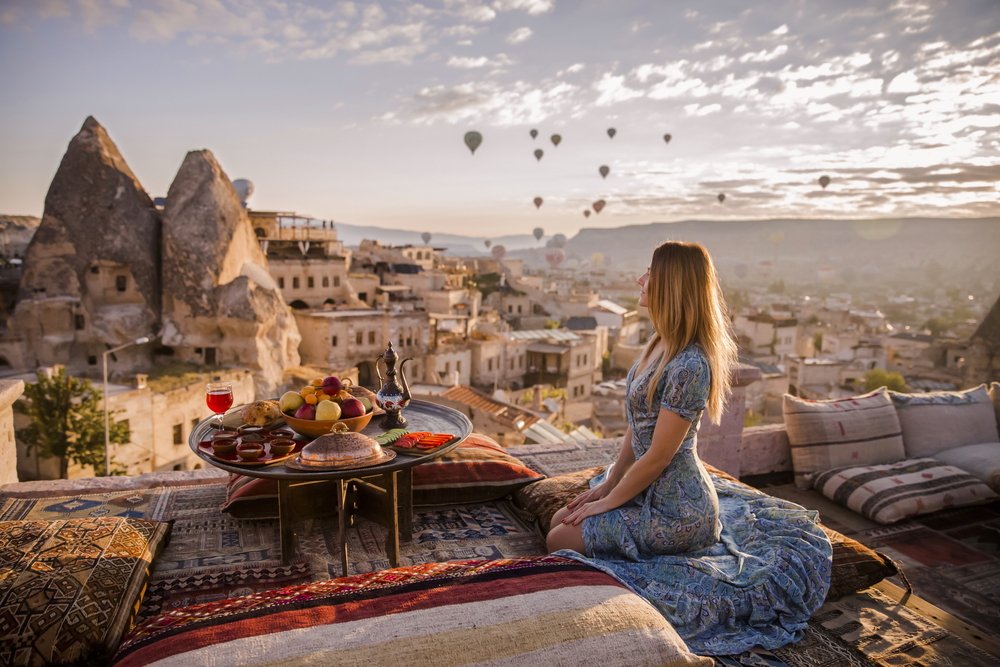
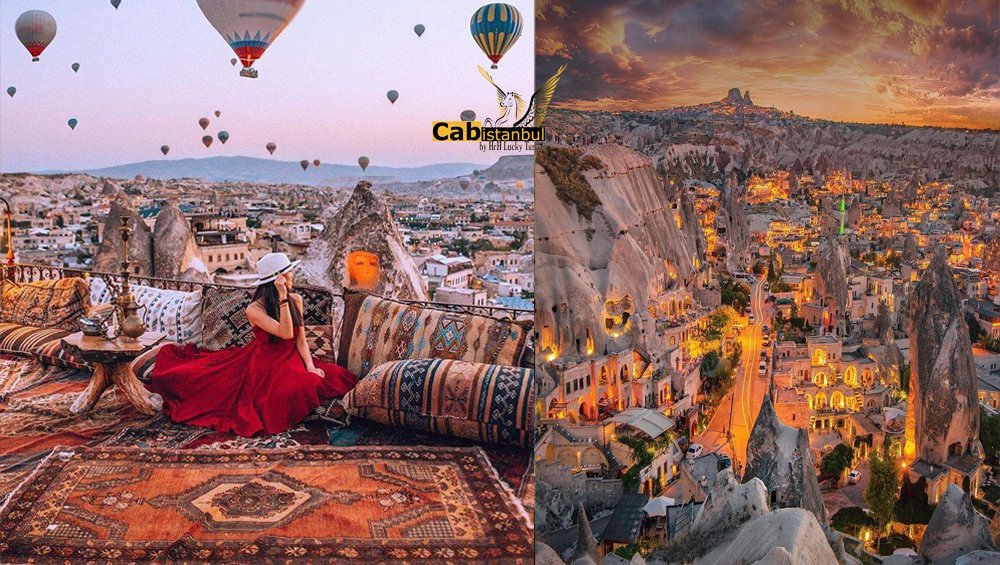
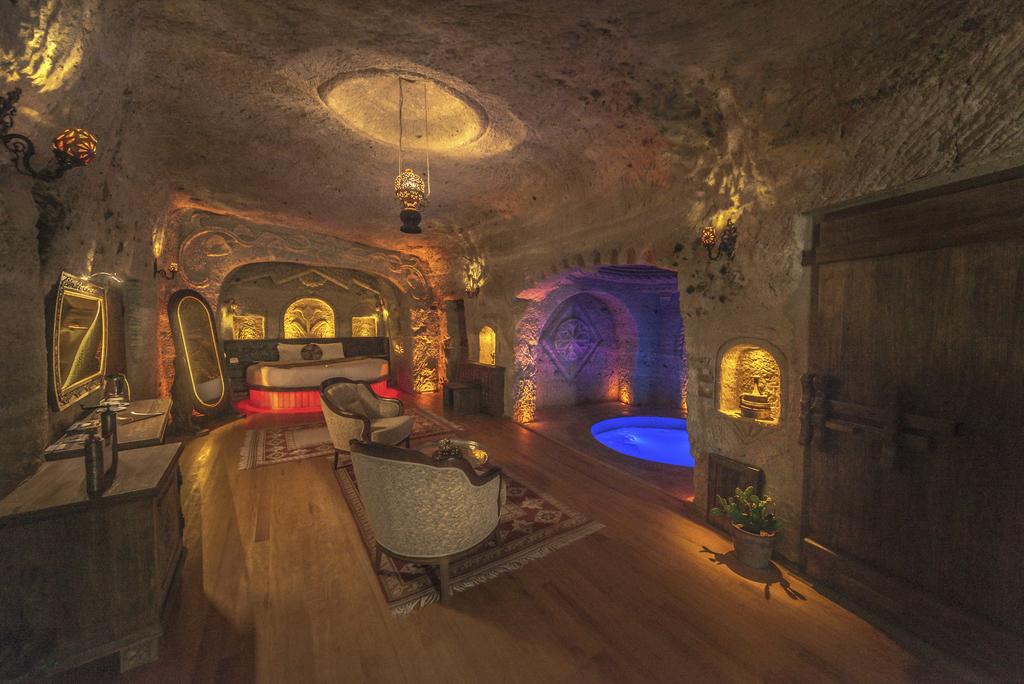

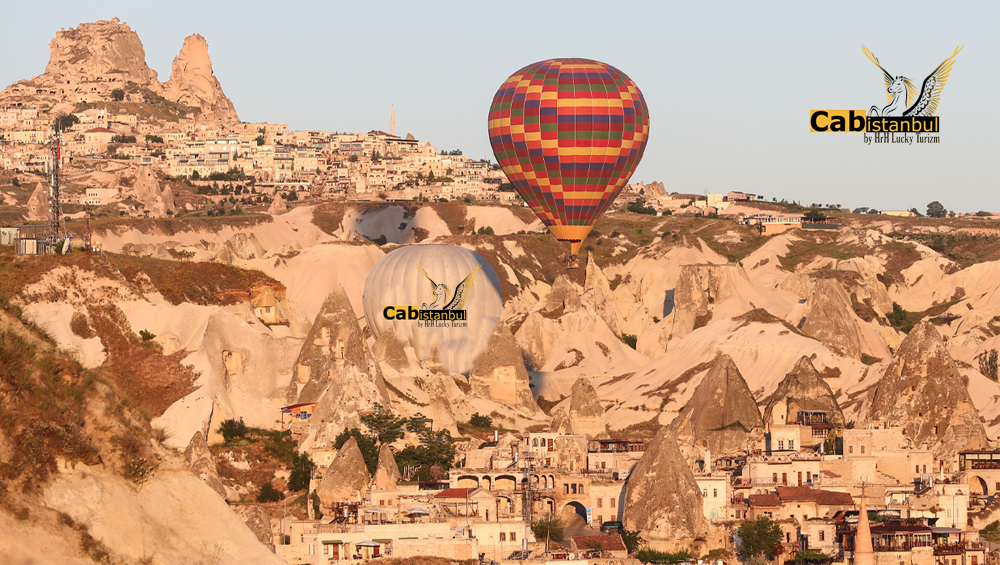
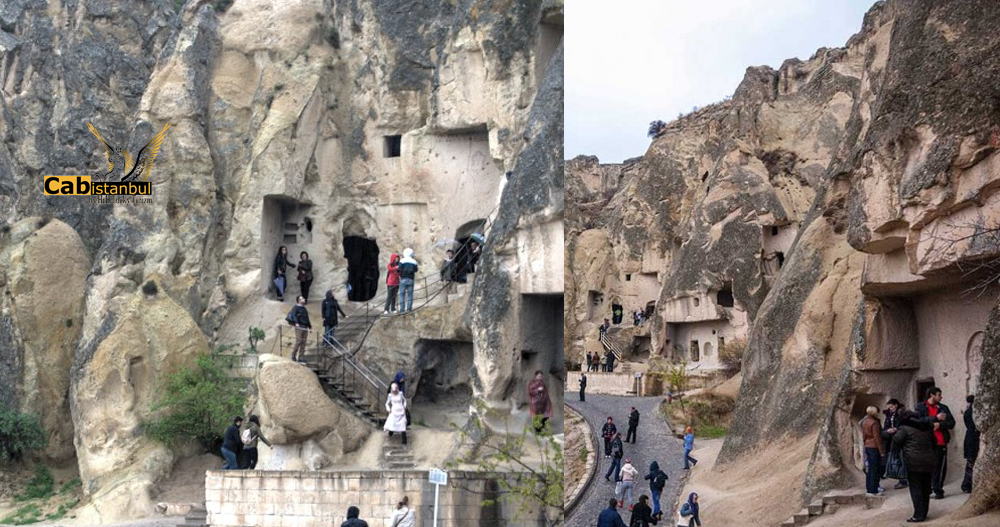




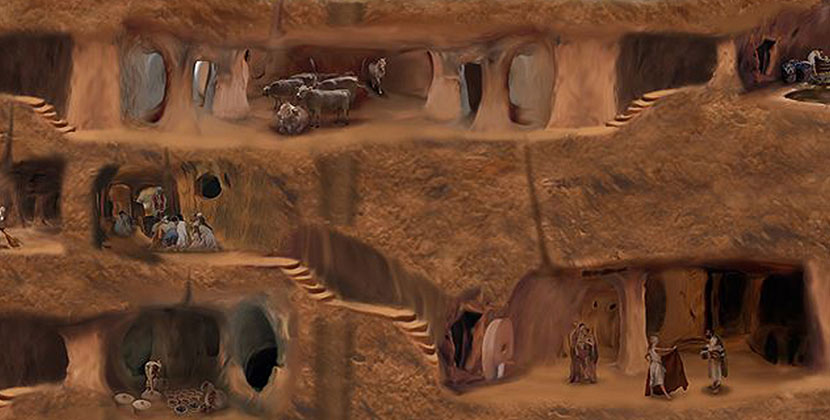



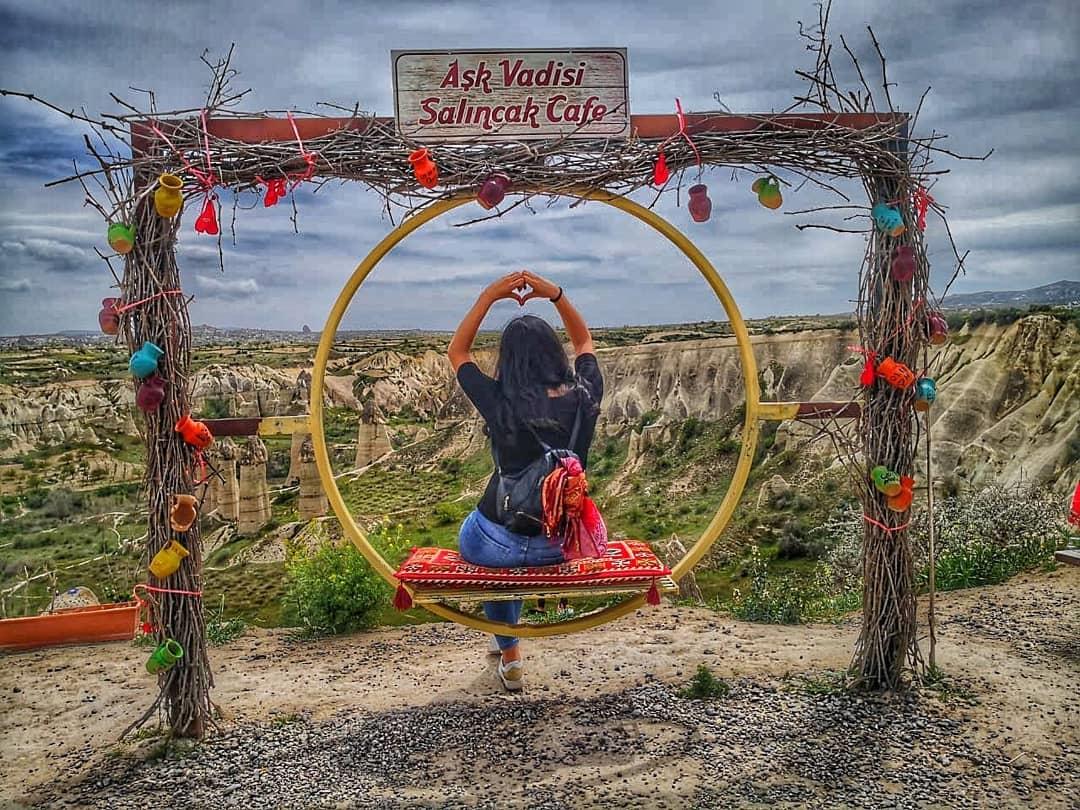

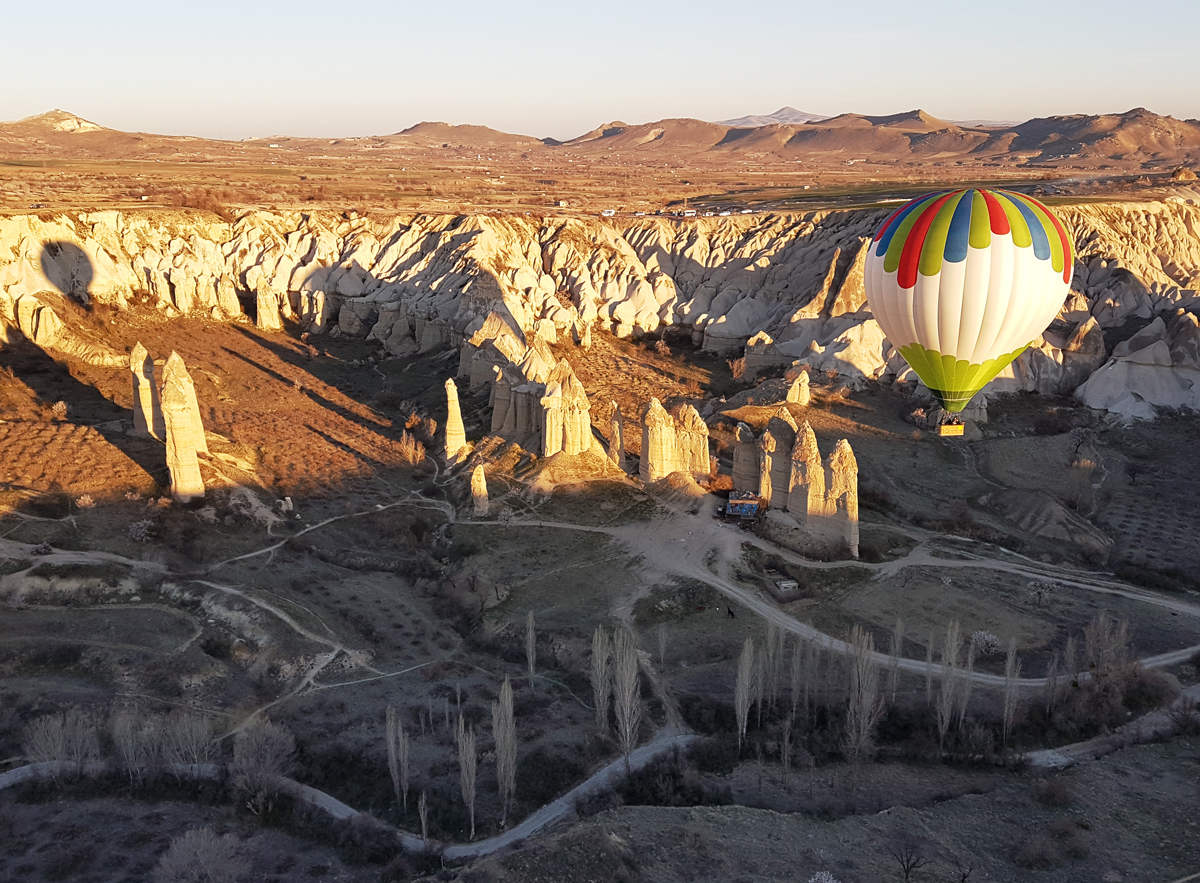

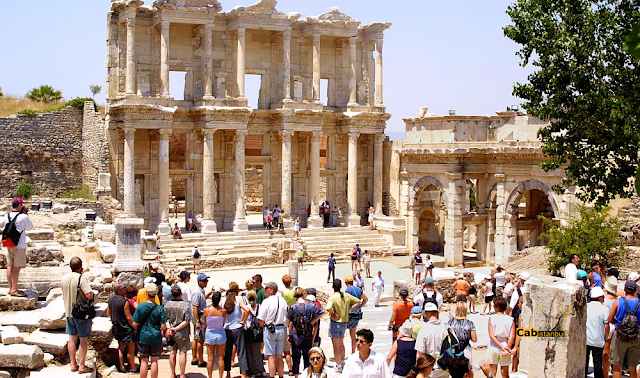

Yorumlar
Yorum Gönder